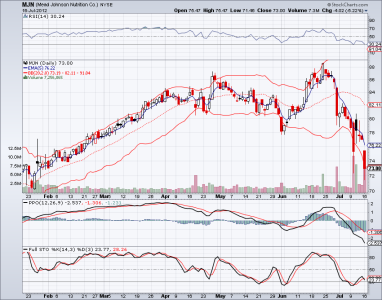MrJohnRoss
Market Veteran
- Reaction score
- 58
The Forum works well on MOBILE devices without an app: Just go to: https://forum.tsptalk.com
Please read our AutoTracker policy on the
IFT deadline and remaining active. Thanks!
$ - Premium Service Content (Info) | AutoTracker Monthly Winners | Is Gmail et al, Blocking Our emails?
Find us on: Facebook & X | Posting Copyrighted Material
Join the TSP Talk AutoTracker: How to Get Started | Login | Main AutoTracker Page
The Forum works well on MOBILE devices without an app: Just go to: https://forum.tsptalk.com ...
Or you can now use TapaTalk again!
JR and all contributors I appreciate your take on world view and the market.
I wanted to comment on the short discussion on engineers.
In my 15 years with my current agency and my 24 years in the military I have dealt with many engineers.
Good and bad.
Many of the bad were just bad, wrong career. Many of the bad were unwilling to learn the "nuts and bolts" of what they were hired for.
The good were willing to admit that school had not totally prepared them for the job they were in and learned about it. Some of those good were just bad at being engineers. Most of the good learned what they could about the current job and applied what they had learned in school to it.
One engineer who I considered good often made a statement about theory running head on in to reality. This same guy who worked on our firewalls early on declared the only perfect firewall was a pair of dykes.
I see a lot of engineers hired here as protection or communications engineers. Most new engineers are totally overwhelmed, thinking that the BS or MS makes them know it all. They have no concept that what they learned is only a basis for what they need to know. A lot of them leave for jobs where they do math all day. Some actually try to learn what they need to know to do the job. Turnover is high.
Most of the useless ones need to be mentored. Told to learn the job or move on. Unfortunately that does not often happen in government service. They also need to be assigned actual tasks where they can see the physical results if they succeed and have their feet held to the fire if they don't. Again, mentoring is required for this.
I have also been told that engineers have hairy ears...
Back on topic, hammers, consolidation candles, all the up/down wicks? You don't expect me to do what I want young engineers to do and learn something about candles?
PO
You sound like the typical frustrated "engineering technician".
Actually an electronic equipment craftsman. In the military days it was wideband radio technician. (radio relay early on).
I just thought i would comment View attachment 19541since I have worked so closely with engineers my whole life. I really enjoy it when the new communications engineers want to get data from say Tucson to Cheyenne and start asking questions about "the cloud". They are always amazed at how many parts there are in the cloud. I am proud of my part of the cloud.
PO
Here's a good one:
"Quantitatively based solutions and asset allocation equations invariably fail as they are designed to capture what would have worked in the previous cycle whereas the next one remains a riddle wrapped in an enigma."
Send that to Burntankle and Geithner....and this helps how?????? :suspicious:

Been trying to think very carefully of a way to create a new timing system that takes advantage of price extremes of TNA/TZA.
As most of you know, those ETF's are used quite commonly for their triple leveraged power, both on the upside and the downside. The price swings can be incredible.
With that in mind, I may have stumbled upon something that seems that it can't possibly be true. Here's why...
So far, a study has been performed on the first 6 months of 2012. Here's what the data says...
Using this proposed "system", there were 15 trades; 12 wins and 3 losses, for a 80% success rate.
Average number of days per trade was 7.2 trading days.
Maximum drawdown was -5.7%
Maximum gain was 23.8%
From 1/1/2012 through 6/29/2012, $10,000 turned into $33,032.25.
Six month percent gain = 230.3%.
I'm worried that this cannot possibly be correct, and that it won't work in real time.
The plan is to now look back through three years of data (from 2009 through 2011), and see how it compares with the first 6 months of this year.
Then the real question will become... is this a realistic timing model, or just a great back-tested excercise?
This is all done without analyzing or interpreting any charts, and is based solely upon closing prices of TNA/TZA.
The data has been uploaded into a spreadsheet, and analysis is taking place when time is available.
I'll let everyone here at TSPTalk know of any future developments.
Wish us luck!
JR
your system wouldnt happen to be short right now, would it? id like the reassurance :laugh:
